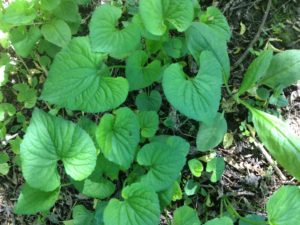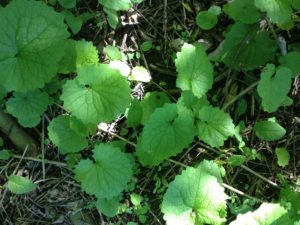Suddenly it’s summer. The spring migration is coming to an end, and the nesting season is well under way. Early spring wildflowers have bloomed, but mid-season plants are ready to vie for our attention. Plants in general seem to be putting on remarkable growth- especially in lawns it seems!
In the preserve, the nodding trilliums are now blooming, although much more demure than their grand cousins of drier, warmer woodlots. Violets, starflower, bunchberry, blue-bead lily, and Canada mayflower are blooming at the Dunes and Point Beach, similarly as in the far north woods. In the meadows, many of the native prairie plants are still just waking up (they don’t call them warm season species for nothing). On sandy fields, common milkweeds are bolting upward, as if to welcome the monarch butterflies migrating from the south, females eager to deposit the next generation’s eggs. Monarchs were seen very early this year, weeks ago already, apparently borne northward on strong south winds. This is good, they will have ample time to build their population before the fall migration, which will occur all too soon.

wood violet
All this – birds, wildflowers, and spring plant growth are so positive that it’s difficult to face the realities of land management. Our staff and volunteers know all too well that in the midst of the sea of green, exist plants that don’t belong. Plants that threaten to change the face and function of our forests, marshes, and fields, and have done so already. In the fall, winter, and spring seasons we work to remove invasive shrubs. In late spring, the shrub treatments become less effective so we switch to replanting formerly invaded areas and removing alien wildflowers that would crush our natives.
The beautiful purple and white flowers of dame’s rocket, a native of Eurasia, is an obvious target as the plant suddenly erupts into bloom. We pull out as many as we can and have had success in clearing some areas, but it is a very hardy plant with few natural enemies. Pull we must, encouraged by every native wildflower and fern we uncover.
We couldn’t do all of this without our wonderful volunteers, and one of the most helpful is Don DeBruyn of Two Rivers. He spends many hours helping us in our never-ending land management battles and is truly a blessing, not only to Woodland Dunes, but to the community in general. Last week, while helping to pull dame’s rocket along Columbus St., he did something that I have been dreading for many years- he discovered the first patch of garlic mustard in our preserve. By now, many of us are familiar with garlic mustard, an invasive plant that was unknown here 30 years ago. Now it seems that it is found in more places than not, and is especially threatening because it will grow well in shade and readily invades woodlands. It crowds out native plants, injects chemicals into the soil that disrupt native fungi (on which plants depend), and prevents tree seedlings from growing. Last year, our staff found a small patch across the street and it’s likely that deer or raccoons transported the tiny seeds to our woods.

garlic mustard
Don immediately pulled any flowering mustard plants to prevent them seeding, but there are hundreds of young plants among the wood violets, oak ferns, and other wildflowers in a small area. We recorded the location with a GPS unit and will monitor weekly for any more flowers this year. After the wildflowers die back later on, we’ll look at removing those young plants before they get a chance to flower next year. We’ll also check along other animal trails in the area. We’ll also need to take precautions so that we don’t spread the seeds ourselves.
There will be no easy fix for this. Wildlife moves around, as it should, and there can be consequences that we don’t like as a result. We can’t build a wall to keep these aliens out- we have to deal with problems that arise thoughtfully and rationally. Perhaps in doing so we’ll discover new ways to keep our forest healthy and preserve the diversity of its makeup. We know that doing so will always be a challenge, and although it won’t be easy, we should never stop trying.
Photos- native wood violet and young garlic mustard plant, similar in appearance.
